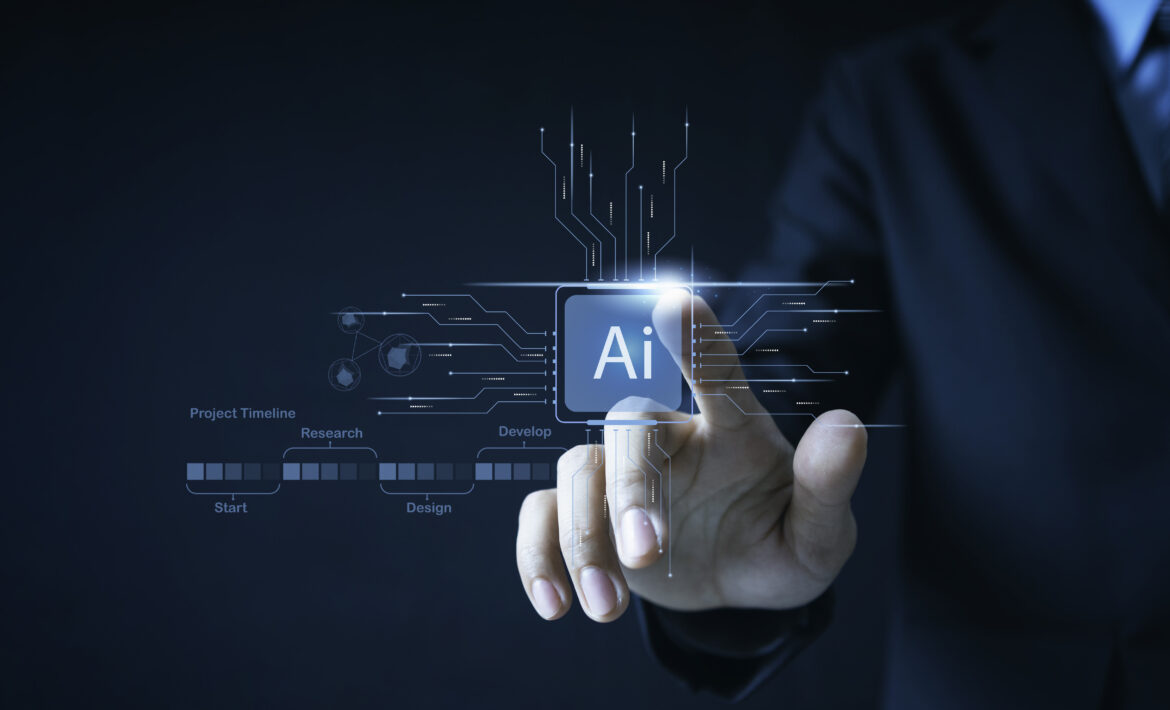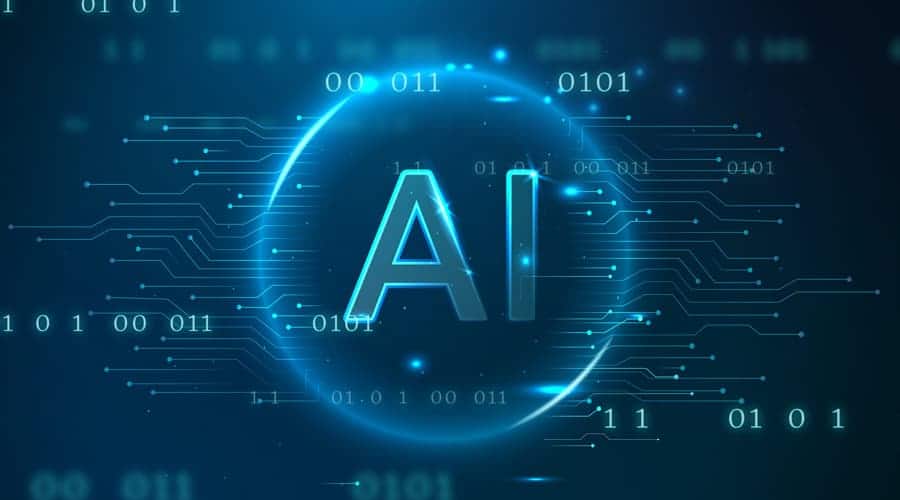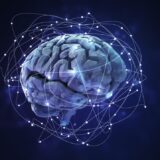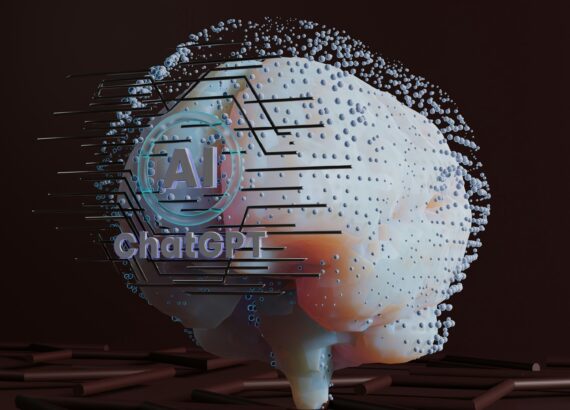A Beginners Guide of Artificial Intelligence
Artificial Intelligence (AI) is revolutionizing the world we live in. This beginner’s guide aims to provide a comprehensive understanding of AI, its fundamental concepts, and its diverse applications. From exploring the basics of AI to delving into its various types and real-world implementations, we will also discuss the role of machine learning, ethical considerations, industry implications, challenges, and future trends. Whether you are completely new to the field or seeking to expand your knowledge, this guide will lay a solid foundation for comprehending and appreciating the power and potential of artificial intelligence.

1. Introduction to Artificial Intelligence
Defining Artificial Intelligence
Artificial Intelligence (AI) is like having a super-smart computer that can think, learn, and make decisions just like humans. It’s all about creating machines that can perform tasks that usually require human intelligence, such as problem-solving, speech recognition, and decision-making. In short, AI aims to make our machines smart, so they can handle complex tasks without us needing to hold their virtual hands.
A Brief History of Artificial Intelligence
Believe it or not, AI isn’t a new concept. People have been dreaming about intelligent machines since ancient times. However, the field really started to pick up speed in the 1950s, when the term “artificial intelligence” was coined. Since then, AI has gone through ups and downs, experiencing moments of hype and disappointment. But it’s safe to say that in recent years, AI has found its footing and is now making a big impact in various industries and everyday life.

2. Understanding the Basics of Artificial Intelligence
Key Concepts and Terminology
If you want to dive into the world of AI, there are a few key terms and concepts you should know. For starters, machine learning is a fundamental part of AI, where computers learn from experience without being explicitly programmed. Deep learning is a type of machine learning that uses artificial neural networks to mimic the way the human brain works. And then there’s natural language processing, which helps computers understand and communicate with humans in human language (no robotic voices here!).
Components of Artificial Intelligence Systems
When it comes to building AI systems, there are a few main components to consider. First, you have the data, which is the fuel that powers AI. Then there are the algorithms, which are the fancy mathematical recipes that make sense of the data and help AI systems learn. And finally, you have the computing power, which is like the muscles that allow AI systems to process all that data and make intelligent decisions.
The Difference Between Narrow and General AI
Not all AI is created equal. While narrow AI is designed to perform specific tasks really well, general AI aims to have the same level of intelligence as a human across various domains. We’re still a long way from achieving general AI (sorry, no robot overlords just yet!), but narrow AI is already making waves in areas like voice assistants, self-driving cars, and recommendation algorithms. So, don’t worry, AI won’t outsmart us completely…at least not yet.

3. Types and Applications of Artificial Intelligence
Machine Learning and Deep Learning
Machine learning is the star of the AI show. It’s all about training computers to learn from data, so they can make predictions or take actions without being explicitly programmed. Deep learning, a flavor of machine learning, uses neural networks with multiple layers to process data and extract patterns. It’s like giving AI systems a super-sized brain and letting them find those hidden gems of knowledge all on their own.
Natural Language Processing
Ever marvel at how voice assistants like Siri or Alexa can understand what you say and respond appropriately? Thank natural language processing for that. It’s the branch of AI that focuses on making computers understand and respond to human language. From chatbots to language translation, natural language processing is bringing computers into the conversation…literally!
Computer Vision
Computer vision is AI’s way of seeing the world. It enables computers to analyze and understand visual data, like images and videos. From facial recognition to object detection, computer vision is helping AI systems “see” the world around them and interact with it in a more human-like way. Just don’t ask them to appreciate art or choose their favorite color. They’re still working on developing taste.
Robotics and Automation
Robots are no longer just a sci-fi dream. AI has fueled the advancements in robotics and automation, making it possible for machines to perform physical tasks with intelligence and precision. From manufacturing to healthcare, robots and automated systems are becoming valuable partners, taking on repetitive or dangerous tasks, and even providing companionship. Just don’t expect them to laugh at your jokes. They’re still working on understanding humor.

4. The Role of Machine Learning in Artificial Intelligence
Introduction to Machine Learning
Machine learning is the beating heart of AI. It’s the process of training computers to learn from data and improve their performance on specific tasks. Instead of relying on explicit instructions, machine learning algorithms analyze patterns in data and make predictions or take actions based on what they’ve learned. It’s like teaching a computer to ride a bike without actually showing it how to pedal. Pretty cool, right?
Supervised Learning
Supervised learning is a popular type of machine learning where the computer learns from labeled examples. It’s like having a teacher guiding the learning process. The computer is given input data with corresponding output labels and is trained to make predictions based on that data. It’s like having a personal tutor for the computer, helping it learn and improve step by step.
Unsupervised Learning
Unsupervised learning is the wild child of machine learning. In this approach, the computer is given unlabeled data and is left to its own devices to find patterns and make sense of it all. It’s like giving the computer a giant puzzle and letting it figure out how the pieces fit together. Unsupervised learning allows AI systems to discover hidden patterns and uncover valuable insights without any preconceived notions.
Reinforcement Learning
Reinforcement learning takes a more interactive approach to training computers. It’s like a trial-and-error process where the computer learns to make decisions by receiving feedback on its actions. Think of it as a virtual reward system. When a computer makes the right decision, it gets a virtual pat on the back. When it messes up, it learns from its mistakes. Gradually, the computer becomes an expert in making the right choices, without needing constant supervision.
Now that you’ve got the basics of AI under your belt, you’re ready to dive deeper into this captivating field. So go forth and discover the wonders of artificial intelligence, but remember, don’t teach your computer any bad habits. It’s hard enough keeping our own bad habits in check!

5. Ethical Considerations in Artificial Intelligence Development
Ensuring Fairness and Bias-Free AI
When developing artificial intelligence systems, it’s crucial to ensure fairness and eliminate bias. AI algorithms can unintentionally inherit biases from the data they are trained on, leading to unfair outcomes. Developers must carefully curate and diversify training datasets to prevent discrimination and promote inclusivity.
Privacy and Data Protection
Artificial intelligence relies heavily on data, which raises concerns about privacy and data protection. Developers must prioritize implementing robust security measures to safeguard sensitive information. Striking a balance between utilizing data effectively and respecting user privacy is essential in building trust with AI technology.
Transparency and Explain ability in AI
AI algorithms often operate as black boxes, making their decision-making processes obscure to the end-users. To foster trust and understanding, developers should strive to make AI systems more transparent and explainable. This involves providing clear insights into how AI arrives at its conclusions and ensuring accountability for its actions.
Social and Economic Impact of AI
Artificial intelligence has far-reaching implications beyond technology. It has the potential to reshape industries, automate jobs, and impact society as a whole. Developers must be mindful of these broader consequences and consider the ethical and social implications that AI advancements bring.

6. Implications of Artificial Intelligence in Various Industries
Healthcare
In the healthcare industry, AI can enhance diagnostics, accelerate drug discovery, and improve patient care. From analyzing medical images to predicting disease outcomes, AI has the potential to revolutionize healthcare delivery and save lives.
Finance and Banking
AI is transforming the finance and banking sectors with innovations such as algorithmic trading, fraud detection, and personalized financial advice. By automating repetitive tasks, AI can improve efficiency, streamline processes, and enhance customer experiences.
Transportation and Logistics
Autonomous vehicles, route optimization algorithms, and smart logistics systems are just a few examples of how AI is revolutionizing transportation and logistics. AI-powered technologies can enhance safety, reduce congestion, and optimize supply chains.
Manufacturing and Automation
In manufacturing, AI-driven automation is increasing productivity and improving quality control. From predictive maintenance to robotic assembly lines, AI is revolutionizing manufacturing processes, enabling cost savings and greater efficiency.

7. Challenges and Limitations of Artificial Intelligence
Data Limitations and Quality
Artificial intelligence requires vast amounts of data to train and make accurate predictions. Limited or poor-quality data can significantly hinder the effectiveness of AI systems. Ensuring access to high-quality datasets and addressing data limitations is an ongoing challenge.
Trust and Reliability
Building trust in AI is crucial, as society becomes increasingly reliant on its capabilities. Trust can be eroded by AI errors, biases, or lack of transparency. Developing reliable AI systems that consistently deliver accurate results is essential to maintain trust in this rapidly evolving field.
Ethical Dilemmas and Decision-Making
AI raises complex ethical dilemmas, such as autonomous vehicles having to make split-second decisions that may result in harm. Balancing moral considerations with algorithmic decision-making is a significant challenge, requiring careful thought and consideration.
Workforce Displacement
As AI systems take over repetitive and mundane tasks, there is a need to address the impact on the workforce and implement strategies to reskill and upskill individuals in emerging fields.

8. Future Trends and Possibilities in Artificial Intelligence
Advancements in Deep Learning and Neural Networks
Advancements in these areas are likely to drive breakthroughs in natural language processing, computer vision, and other AI applications.
Explainable AI and Interpretability
Making AI systems more explainable and interpretable is an active area of research. Enhancing our understanding of AI decision-making processes will be crucial for deploying AI in critical areas such as healthcare and finance.
Human-Machine Collaboration
The future of AI augmenting human capabilities, AI can assist in complex tasks, improve decision-making, and enable more productive and efficient workflows.
AI in Space Exploration and other Frontiers
Artificial intelligence holds great potential for advancing space exploration and other frontiers. From autonomous rovers on Mars to optimizing satellite networks, AI can support scientific discoveries and push the boundaries of human knowledge. Who knows, maybe AI will be the first to make contact with extraterrestrial life!
As we conclude this beginner’s guide to understanding artificial intelligence, we have scratched the surface of this vast and dynamic field. AI continues to evolve and shape our world, offering immense potential and possibilities for the future. It is essential to stay informed and engaged with the latest advancements and ethical considerations as AI becomes increasingly integrated into our lives. By grasping the basics, exploring its applications, and recognizing its limitations, we can navigate the exciting world of artificial intelligence with curiosity, awareness, and a sense of responsibility.

FAQ
What are some ethical considerations in the development of Artificial Intelligence?
As AI becomes more pervasive, it raises important ethical considerations. Some key considerations include ensuring fairness and avoiding biased algorithms, protecting privacy and data security, promoting transparency and explainability in AI decision-making, and addressing the social and economic impact of AI, such as job displacement.
What are the main challenges in the field of Artificial Intelligence?
Artificial Intelligence faces several challenges. These include limitations in data quality and availability, concerns regarding the trustworthiness and reliability of AI systems, ethical dilemmas in decision-making, and the potential displacement of human jobs. Overcoming these challenges requires ongoing research, collaboration, and responsible development and deployment of AI technologies.
What does the future hold for Artificial Intelligence?
The future of Artificial Intelligence is incredibly promising. Advancements in deep learning and neural networks, the quest for explainable AI, the potential for human-machine collaboration, and the application of AI in frontier areas like space exploration hold immense possibilities. As AI continues to evolve, it will shape our lives in ways we can only begin to imagine.
If you want to build your website in an affordable price contact: www.nextr.in
Read Next Blog: Difference Between Free ChatGPT And ChatGPT Plus













